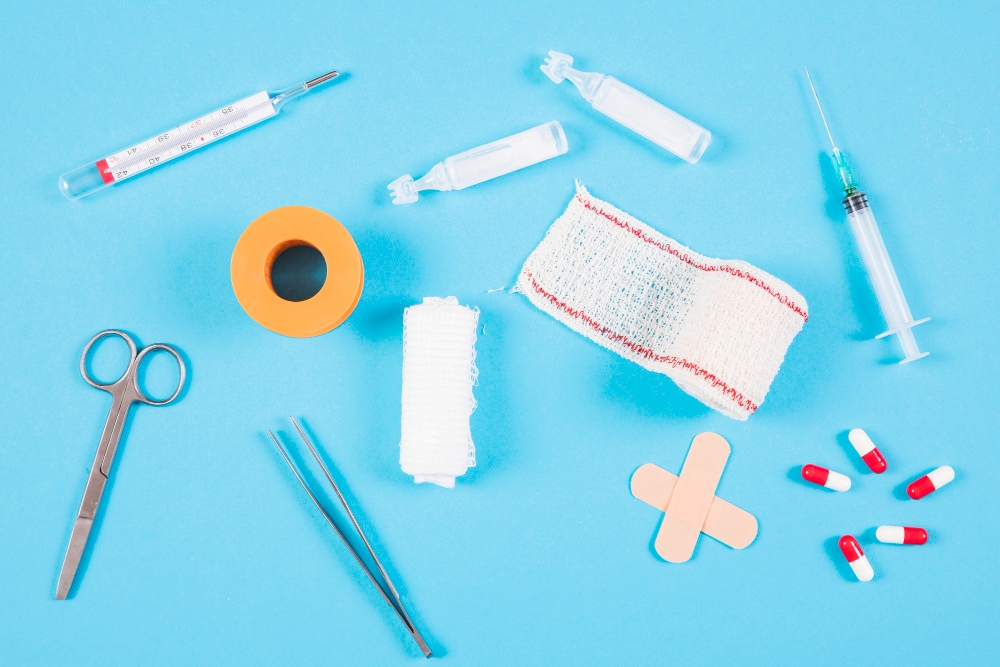How to Choose the Right Silicone Foam Dressing for Cuts and Scrapes

Cuts and scrapes are common everyday injuries, but if not cared for properly, they can lead to infection, delayed healing, or visible scarring. Choosing the right wound care product is crucial for protecting the skin and supporting recovery. One option that has gained popularity in both medical settings and at-home care is the silicone foam dressing. These dressings provide protection, comfort, and faster healing compared to traditional bandages. But with different types available, how do you select the best one for your needs?
What is a Silicone Foam Dressing?
A silicone foam dressing is a multi-layer wound dressing designed to absorb exudate (fluid from wounds) while keeping the wound moist and protected. The top layer is usually waterproof and breathable, the middle foam layer absorbs fluid, and the bottom silicone layer adheres gently to the skin without causing damage during removal.
This makes silicone foam dressings ideal for cuts, scrapes, burns, surgical wounds, and chronic wounds where comfort and protection are essential.
Benefits of Silicone Foam Dressings
-
Gentle on Skin – The soft silicone adhesive adheres securely but does not stick to the wound bed, minimizing pain during removal.
-
Absorption of Exudate – The foam layer absorbs excess fluid, reducing the risk of infection and skin maceration.
-
Moist Healing Environment – By maintaining moisture, these dressings promote faster tissue regeneration and minimize scarring.
-
Reduced Pain – Comfortable for sensitive skin and children, as removal does not pull on healthy skin.
-
Extended Wear Time – Many silicone foam dressings can be worn for several days, making them convenient for daily life.
Factors to Consider When Choosing Silicone Foam Dressings
1. Size and Shape of the Wound
-
For small cuts and scrapes, choose a compact dressing that fits snugly.
-
Larger wounds may require bigger or custom-shaped dressings for full coverage.
2. Absorbency Needs
-
If the wound is producing a lot of fluid, a high-absorbency foam dressing is best.
-
For minor cuts and scrapes with minimal exudate, a thinner foam is sufficient.
3. Skin Sensitivity
-
Choose hypoallergenic silicone foam dressings if you have sensitive skin or are prone to allergies.
-
Ensure the adhesive is gentle, especially for children or elderly patients.
4. Waterproof Protection
-
Select a dressing with a waterproof outer layer if you want to shower or carry out daily activities without worrying about the wound.
5. Wear Time
-
Some dressings are designed to last up to 7 days, while others are suitable for shorter wear.
-
For active individuals, long-wear waterproof dressings are ideal.
6. Ease of Application and Removal
-
Look for dressings with rounded edges to prevent peeling.
-
Ensure removal is painless and does not cause trauma to the wound.
How to Apply Silicone Foam Dressings Correctly
-
Clean the Wound – Gently wash with mild soap and water or a wound cleanser.
-
Dry the Skin Around the Wound – This helps the dressing adhere properly.
-
Apply the Dressing – Place the silicone side over the wound and press gently around the edges.
-
Change as Needed – Replace the dressing if it becomes saturated, starts to peel, or after the recommended wear time.
-
Dispose Safely – Discard used dressings hygienically to avoid contamination.
When to Seek Medical Attention
Silicone foam dressings are highly effective for minor injuries, but you should seek medical advice if:
-
The wound is deep or heavily bleeding
-
Signs of infection appear (redness, swelling, pus)
-
The wound is not healing after several days
-
You experience an allergic reaction to the dressing
Conclusion
Choosing the right silicone foam dressing for cuts and scrapes can make a big difference in how quickly and comfortably your wound heals. By considering factors like size, absorbency, skin sensitivity, and waterproof protection, you can select the most suitable option for your needs. These dressings not only speed up healing but also provide comfort and protection—ensuring your skin recovers smoothly and with minimal scarring.
- Questions and Answers
- Opinion
- Motivational and Inspiring Story
- Technology
- Live and Let live
- Focus
- Geopolitics
- Military-Arms/Equipment
- Sicherheit
- Economy
- Beasts of Nations
- Machine Tools-The “Mother Industry”
- Art
- Causes
- Crafts
- Dance
- Drinks
- Film/Movie
- Fitness
- Food
- Spiele
- Gardening
- Health
- Startseite
- Literature
- Music
- Networking
- Andere
- Party
- Religion
- Shopping
- Sports
- Theater
- Health and Wellness
- News
- Culture

